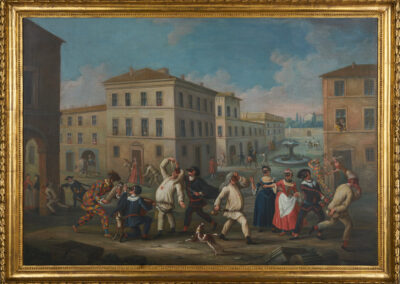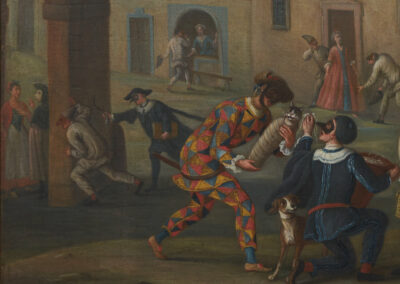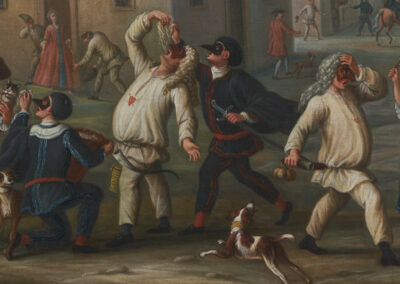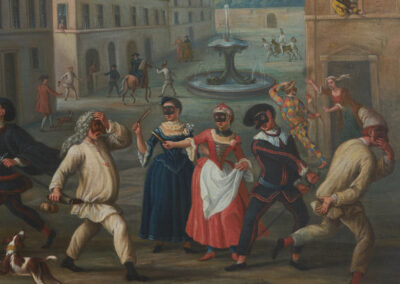COMMEDIA DELL’ARTE
Likely Italy
Early 18th century
Oil on canvas
42.5” x 58”
Commedia dell’arte — or “comedy of the profession” — was an Italian form of comedy that was especially popular in the 16th to 18th centuries. Commedia troupes would travel from town to town (and eventually country to country), performing in the open air. It was an ensemble genre, and built its comedy around physical humor and the improvisational skills of its actors.
Commedia dell’arte was equally if not more popular in France, where it continued its popularity throughout the 17th century (until 1697), and it was in France that commedia developed its established repertoire. Commedia evolved into various configurations across Europe, and each country acculturated the form to its liking.
Compagnie, or companies, were troupes of actors, each of whom had a specific function or role. A troupe often consisted of ten performers of familiar masked and unmasked types. Female roles were played by women, documented as early as the 1560s, making them the first known professional actresses in Europe since antiquity. Its improvisations were set within a firm framework of masks and stock situations and its plots were frequently borrowed from classical literary tradition. Professional players who specialized in one role developed their own recognizable comic acting technique, which contributed to the popularity of the itinerant commedia troupes that traveled throughout Europe.



